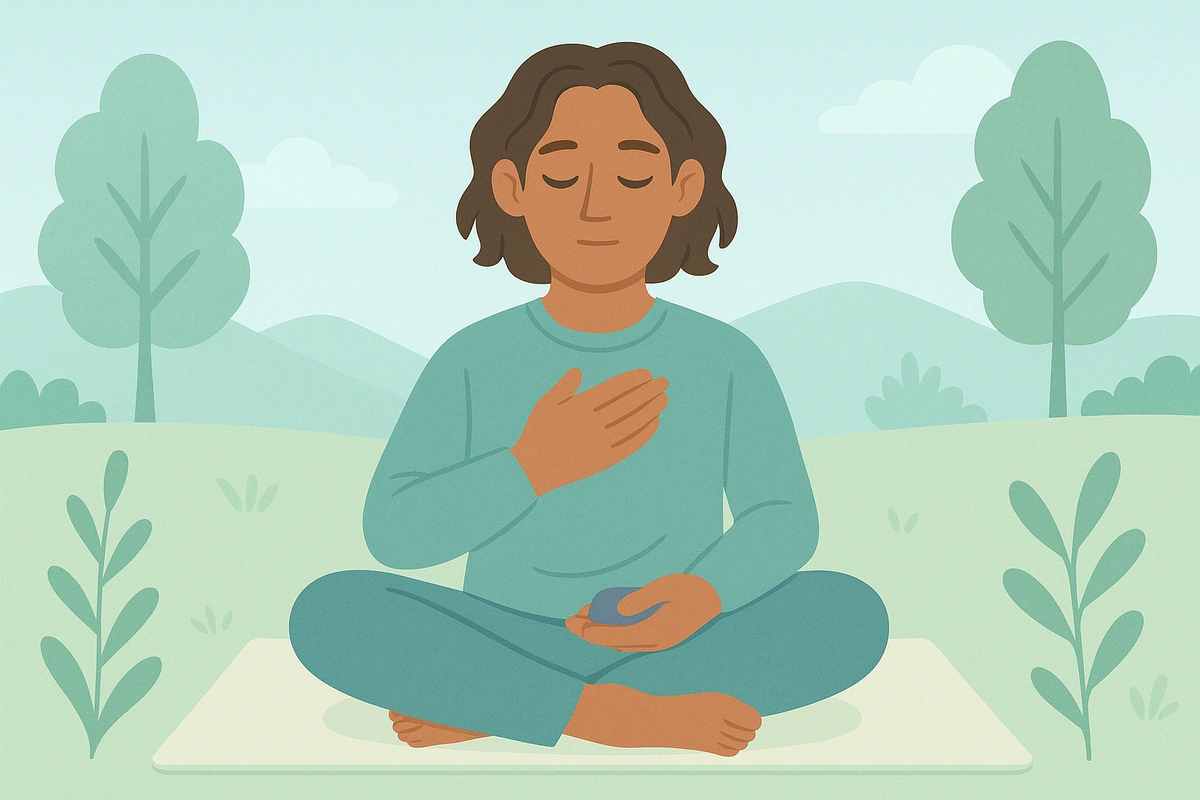Breath counting uses your natural breathing rhythm to anchor your mind in the present moment and break anxious thought loops. This simple practice activates your body's relaxation response within minutes, providing immediate relief from stress and building long-term emotional resilience.

Practice breath counting by focusing your attention on counting each breath cycle from one to ten and back again. This ancient mindfulness technique redirects your mind away from anxious thoughts and toward the present moment through simple numerical focus.
When anxiety spirals take over, your mind races with worries about the future or regrets about the past. Breath counting gives your racing thoughts a single point of focus - the simple act of counting your natural breathing rhythm. This gentle redirection calms your nervous system and brings you back to the here and now within just a few minutes.
Breath counting activates your parasympathetic nervous system, which controls your body's rest and digest response. This system directly counters the stress response by slowing your heart rate, lowering blood pressure, and reducing stress hormone production.
The counting component provides what researchers call "cognitive anchoring" - giving your mind a simple, repetitive task that prevents it from following anxious thought spirals. Neuroimaging studies show that focused attention on breathing activates the prefrontal cortex while calming the amygdala, the brain's alarm center.
Natural breathing rhythm creates what scientists call respiratory sinus arrhythmia - a healthy pattern where heart rate increases slightly on inhale and decreases on exhale. This pattern optimizes oxygen delivery and promotes cardiovascular health.
The practice builds present-moment awareness, which breaks the cycle of rumination about past events or worry about future possibilities. Research shows that present-focused attention significantly reduces symptoms of anxiety and depression.
Counting to ten and restarting creates natural completion cycles that give you a sense of accomplishment and control. This structure helps maintain focus while preventing the frustration that can come with open-ended meditation practices.
The simplicity factor makes breath counting accessible during crisis moments when complex techniques become too difficult to remember or execute. Clinical studies show that simple, concrete practices are more likely to be used consistently than complicated interventions.
"I keep losing count and forgetting what number I'm on" - This happens to everyone and is completely normal. Simply start over at one whenever you notice you've lost track. The noticing and returning is the actual practice.
"My mind races too much to focus on counting" - Start with shorter sessions of 1-2 minutes and count more slowly. You can also try counting on both inhales and exhales initially for more mental engagement.
"I feel more anxious when I focus on my breathing" - Some people experience anxiety about breathing itself. Try breath counting with eyes open, practice for shorter periods, or focus on counting without trying to control your breath rhythm.
"I fall asleep during breath counting" - If practicing for relaxation or sleep, this is actually a positive outcome. If you need to stay alert, try practicing sitting up or with eyes slightly open.
"Nothing happens when I try breath counting" - Benefits often build gradually rather than dramatically. Notice subtle changes like slight muscle relaxation or moments of mental quiet rather than expecting major shifts.
"I can't find time to practice regularly" - Breath counting can be done anywhere in 2-3 minutes. Try practicing during daily activities like waiting in line, sitting at red lights, or before getting out of bed.